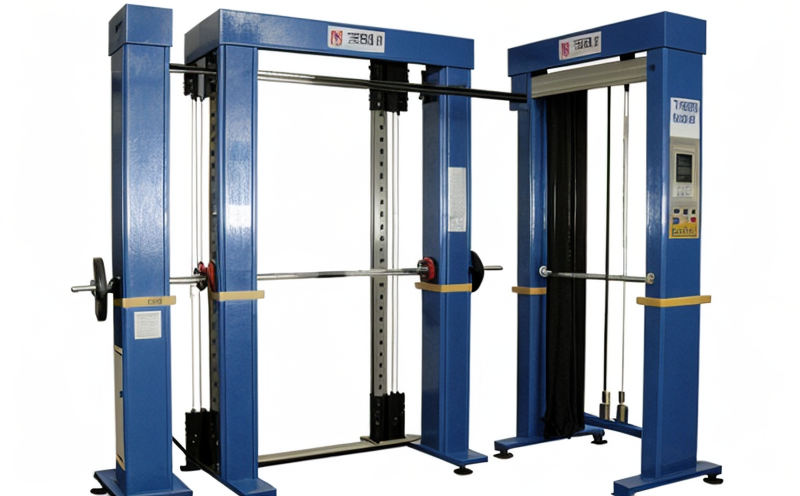JIS L1018 Determination of fabric thickness
The Japanese Industrial Standard (JIS) L1018 method is designed to determine the fabric thickness by measuring the weight of a precisely cut specimen. This test is essential in ensuring that fabrics meet specified standards for thickness, which directly affects their durability and performance.
Thick fabrics are often used where wear resistance and insulation properties are critical, such as in outdoor clothing, industrial garments, and upholstery materials. Thin fabric can be crucial for lightweight sportswear or thermal underwear, emphasizing breathability and comfort. The JIS L1018 test helps manufacturers fine-tune their processes to achieve the desired thickness without compromising on quality.
The testing process is conducted in a controlled environment to ensure accurate results. A sample cut from the fabric according to defined dimensions is weighed using precision scales. The weight of the specimen, combined with its known area and density, allows for an accurate calculation of the fabric's thickness. This method provides consistent measurements across different materials, making it suitable for both qualitative and quantitative assessments.
For this test, a standard-sized square or circular cutout is required to ensure uniformity in measurement. The specimen must be prepared meticulously; any irregularities could lead to inaccurate results. After cutting the specimen, it should be dried thoroughly if wet to prevent errors due to moisture content affecting the weight.
The JIS L1018 test is particularly relevant for weaved fabrics where thickness plays a significant role in determining suitability for various applications. It ensures that fabric manufacturers can consistently produce products that meet both internal and external quality control requirements. This consistency is crucial not only for maintaining brand reputation but also for ensuring product performance across diverse market segments.
The accuracy of JIS L1018 testing is paramount, especially in industries where even minor deviations from standard thicknesses could impact the functionality or appearance of finished products. By adhering to this method, textile manufacturers can enhance their production processes and improve overall product quality. This enhances consumer satisfaction by delivering fabrics that are both functional and aesthetically pleasing.
| Industry Applications | Description |
|---|---|
| Outdoor Clothing | Ensures durability and protection against harsh weather conditions. |
| Industrial Garments | Protects workers from hazards in industrial environments. |
| Upholstery Materials | Provides comfort and support for seating areas like sofas and chairs. |
| Luxury Fabrics | Maintains premium standards of thickness ensuring high-end finishes. |
The JIS L1018 method is widely recognized in the textile industry for its reliability. It helps manufacturers and suppliers meet rigorous quality standards, which are critical for maintaining competitive advantages in both domestic and international markets. By incorporating this test into their quality assurance protocols, companies can ensure that their products consistently meet or exceed expectations.
Benefits
The JIS L1018 method offers several key benefits to textile manufacturers:
- Consistent Quality Control: Ensures uniform fabric thickness, which is crucial for product performance and durability.
- Improved Product Design: Allows designers to refine their products based on precise measurements of fabric thickness.
- Enhanced Compliance: Helps manufacturers meet specified thickness requirements set by industry standards and regulations.
- Informed Decision-Making: Provides data that informs production processes, leading to more efficient manufacturing operations.
By leveraging the JIS L1018 method, textile companies can gain a competitive edge in terms of product quality and performance. This test not only aids in maintaining high standards but also supports innovation by enabling manufacturers to explore new possibilities within their design and production processes.
Industry Applications
- Outdoor Clothing: Ensures durability and protection against harsh weather conditions.
- Industrial Garments: Protects workers from hazards in industrial environments.
- Upholstery Materials: Provides comfort and support for seating areas like sofas and chairs.
- Luxury Fabrics: Maintains premium standards of thickness ensuring high-end finishes.
The JIS L1018 method is not only confined to the textile industry but also finds applications in other sectors where fabric quality is paramount. This includes automotive interiors, home textiles, and even medical apparel. By adhering to this standard, manufacturers can ensure that their products are reliable, safe, and meet customer expectations across various industries.
Quality and Reliability Assurance
The JIS L1018 method plays a crucial role in quality assurance by providing consistent and accurate measurements of fabric thickness. This ensures that the final products are not only reliable but also meet the required specifications for durability, comfort, and performance.
The precision of this test is further enhanced through rigorous calibration procedures and adherence to strict environmental conditions during testing. This helps eliminate variables that could affect measurement accuracy, ensuring that results are repeatable and consistent across different samples and batches.
Manufacturers who implement the JIS L1018 method in their quality control processes benefit from improved product consistency and reduced rework rates. By adhering to this standard, companies can build trust with their customers by delivering products that consistently meet or exceed expectations.
The reliability of results obtained through the JIS L1018 test is further bolstered by its use in international standards such as ISO 20645 and ASTM D3772. These global standards ensure that the method remains relevant and applicable across diverse markets, making it an essential tool for textile manufacturers operating on a global scale.





